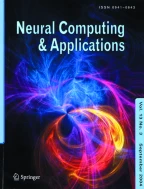2259Accesses
23Citations
Abstract
Gamified learning has been proven to have the potential for promoting the quality of learning by better engaging students in the learning process. The goal of this study is to create an immersive 3D learning environment where a game is integrated into virtual exhibitions so as to inspire high-school students’ motivation and raise learning performance in humanities courses. In this paper, we developed a framework of virtual exhibitions by combining Unity game engine with a novel 3D JanusVR browser. The survey results from a group of students, whose ages range between 15 and 16, indicate that the proposed virtual exhibitions efficiently capture the attention of students and improve interests to learn history in comparison with traditional teaching and online webpages.
This is a preview of subscription content,log in via an institution to check access.
Access this article
Subscribe and save
- Get 10 units per month
- Download Article/Chapter or eBook
- 1 Unit = 1 Article or 1 Chapter
- Cancel anytime
Buy Now
Price includes VAT (Japan)
Instant access to the full article PDF.






Similar content being viewed by others
Explore related subjects
Discover the latest articles, news and stories from top researchers in related subjects.Change history
15 May 2024
This article has been retracted. Please see the Retraction Notice for more detail:https://doi.org/10.1007/s00521-024-09973-8
References
Connolly TM, Boyle EA, MacArthur EW et al (2012) A systematic literature review of empirical evidence on computer games and serious games. J Comput Educ 59(2):661–686
Reeves B, Read JL (2013) Total engagement: using games and virtual worlds to change the way people work and businesses compete. Harvard Business Press, Boston
Bontchev B (2015) Serious games for and as cultural heritage. In: The 5th International conference on digital presentation and preservation of cultural and scientific Heritage Veliko Tarnovo, Bulgaria, pp 43–58
Deterding S, Dixon D, Khaled R et al (2011) From game design elements to gamefulness: defining gamification. In: The 15th International academic MindTrek conference on envisioning future media environments, ACM Press, New York, pp 9–15
Bellotti F, Kapralos B, Moreno-Ger P et al (2013) Assessment in and of serious games: an overview. Adv Hum Comput Interact. Article ID 136864
Boyle EA, MacArthur EW, Connolly TM et al (2014) A narrative literature review of games, animations and simulations to teach research methods and statistics. J Comput Educ 74(3):1–24
Boyle EA, Hainey T, Connolly TM (2016) An update to the systematic literature review of empirical evidence of the impacts and outcomes of computer games and serious games. J Comput Educ 94(C):178–192
El-Nasr MS, Smith BK (2006) Learning through game modding. J Comput Entert 4(1):7
Wouters P, Oostendorp HV, Vrugte JT et al (2016) The effect of surprising events in a serious game on learning mathematics. Br J Educ Technol. doi:10.1111/bjet.12458
Bonde M, Markransky G, Wandall J et al (2014) Improving biotech education through gamified laboratory simulations. J Nat Biotechnol 32(7):694–697
Shudayfat EA, Moldoveanu A, Gradinaru A (2014) Learning the bases of chemistry in a content rich, game based 3D MMO virtual environment. In: The 10th international scientific conference on eLearning and software for education, Bucharest, Romania, pp. 15–23
Howland K, Good J, Boulay BD (2015) Narrative support for young game designers’ writing. In: The 14th International conference on interaction design and children, Boston, pp 178–187
Josef F, Max A, Doron G et al (2012) Serious heritage game for art history: design and evaluation of ThIATRO. The 18th International conference on virtual systems and multimedia, Italy, Milan, pp 283–290
Paras B, Bizzocchi J (2005) Game, motivation, and effective learning: an integrated model for educational game design. In: DiGRA 2005 conference on changing views: worlds in play, Vancouver, Canada
Dede C (2000) Emerging influences of information technology on school curriculum. J Curric Stud 32(2):281–303
Bouvier P, Lavoue E, Sehaba K et al (2013) Identifying learners engagement in learning games: a qualitative approach based on learners traces of interaction. In: The 5th International conference on computer supported education, Aachen, Germany, pp 339–350
Acknowledgements
This study was supported by the Provincial Science Foundation of Liaoning, China, under Grant No. 2013020228.
Author information
Authors and Affiliations
Department of Animation, Eastern Liaoning University, Dandong, China
Danling Wang
- Danling Wang
You can also search for this author inPubMed Google Scholar
Corresponding author
Correspondence toDanling Wang.
About this article
Cite this article
Wang, D. RETRACTED ARTICLE: Gamified learning through unity 3D in visualizing environments.Neural Comput & Applic29, 1399–1404 (2018). https://doi.org/10.1007/s00521-017-2928-5
Received:
Accepted:
Published:
Issue Date:
Share this article
Anyone you share the following link with will be able to read this content:
Sorry, a shareable link is not currently available for this article.
Provided by the Springer Nature SharedIt content-sharing initiative

